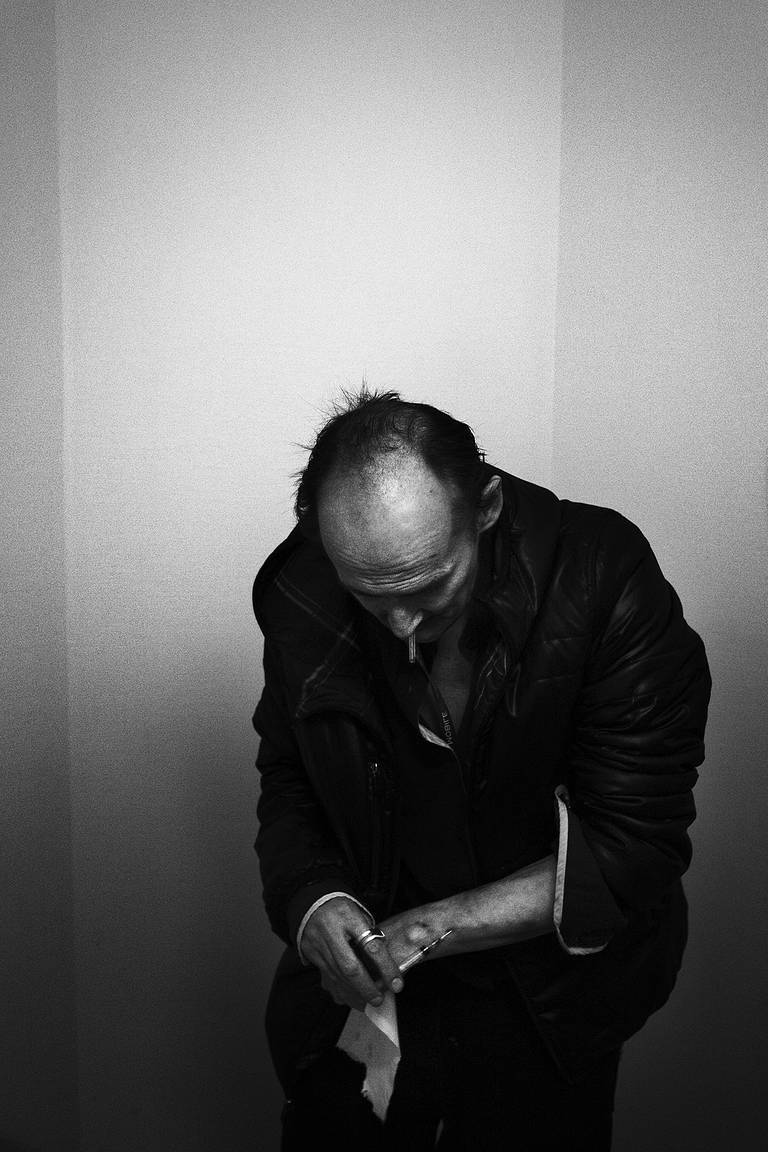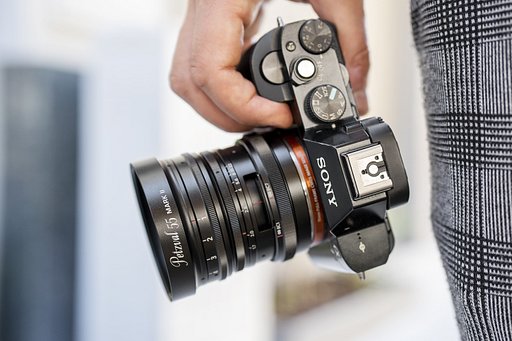The Core of a Human Crisis: Interview with Photographer Mikkel Hørlyck
7 Share TweetMikkel Hørlyck's photographic goal is to provide "a genuine and personal insight into the core of a human crisis". He has worked with Doctors Without Borders on the Libyan coast, documented the perilous journey of migrants crossing the border between Bosnia and Croatia, and photographed refugees trapped in stagnant asylum-seeking processes in Greece. We spoke with Mikkel about his five-years-in-the-making project Jørgen, a Mystery in which he documented the chaotic and extraordinary life of Jørgen Pedersen, a unique character, a lover of the arts, and a heroin addict.

Hi Mikkel, could you start by telling us a bit about yourself and how you got started with photography?
My name is Mikkel Hørlyck (32), and I am an independent conflict photojournalist and visual artist living in Copenhagen, Denmark. I have never shot anything on film, besides one roll, when I was studying at Krogerup High School. All my photographs are digital.
Your photographs are all digital, but they have a gritty, authentic look. Are you attracted to the aesthetic of analogue?
I find analogue photography very fascinating. The aesthetics of Fujifilm is raw, and it might be the reason why it has this look, that you see as authentic as an analogue photograph.
You have a background in both photojournalism and art photography. How do you think these different modes of photography have influenced the way you work now?
Good question. Both are really important when you want to engage a story, and want to understand the depth of what is going on. My process with research, and connection in the field, to edit the photographs is a time I always love, find inspiring and is also transparent and eager to share, when publishing a story.
What is your reasoning behind shooting predominantly in black and white?
With my personality, I find it as a good and strong way to connect with people’s will, their dreams and hopes, even though it is in a tough situation, and for me black and white photography makes that visible.
You say that your goal is to “give a genuine and personal insight into the core of a human crisis”. How did you arrive at this aim? What attracts you to the idea of documenting the human condition at its most desperate?
There is a lot to learn from people who are facing challenging circumstances. Their will is tested, and so is their lives. Years of experience taught me that it is by really trying to understand what people are going through, that it is so important to tell the world, through photography. Also by text and video.

"Jørgen Pedersen should have been dead long ago - considering his age, countless diseases and 40 years of drug abuse. I loved photographing him from our very first meeting to the last. He was a scientist of drugs. Freud of the drug environment. Satan’s favorite. A sophisticated mindset and extroverted being. A holy man. A rich character." – Mikkel Hørlyck
Can you tell us a bit more about your project Jørgen, a Mystery? How did you meet Jørgen and decide to document his story?
It was an amazing meeting. I was standing, looking around, and suddenly, I had eye contact with Jørgen from a distance. He came walking downwards to me, and told me what cameras I was wearing and what my profession was called. I was impressed. Suddenly, he ran away, to the heroin clinic, and then he came back. We went to his house, listened to music and I made photographs of him. I still remember the day very clearly, even though it is back in the spring of 2016.
An interesting remark to that is, that on my way over to the area, where Jørgen lived, I had this exciting feeling that something very unique was going on - without knowing what that was. It was a feeling.
Later on, after the first meeting, actually a few weeks, I decided to go all the way with the story. The bond Jørgen and I had was amazing.
On the days where you were with Jørgen, what did your photographic process look like?
If I knew I wanted to follow him for a couple of days, because it made sense considering his condition, I would look at my calendar and say, I will give him four days. The thing was, practically, that I always had to find him. But I knew his places, where he went, e.g. supermarkets, his relations, the heroin clinic in Aarhus, Denmark and so on. I always found him. Sometimes he was at the hospital or on his way to it. He had a very intense life.
You capture Jørgen and his community in such boundaryless moments; these portraits don’t seem to have any distance between you, the subjects and the viewer. How do you create an environment where the people you photograph feel comfortable enough to open themselves up to the camera?
Good question. I see it as the connection. The bond with the person/persons. I want to see the people I want to photograph, because they are very interesting, and I feel a strong connection to them. Therefore, it feels safe.
What challenges did you face, both in a photographic and individual sense, while embarking on this project?
It is a tough environment, so I had to spend a lot of time, over years, in order to capture Jørgen Pedersen’s unique soul. It was all worth it, and it is a great honor of mine to have told his story. He was a beautiful soul.
What surprised you the most as you continued to photograph Jørgen over the years?
How gigantic a personality he was. There was so much in him. It was always interesting. He made so much progress, even though he was facing a painful life, every day.
You photographed Jørgen from 2016 until his death in 2021, and you grew close. How did you navigate the objectivity of documentary photography/photojournalism during the naturally very taxing experience of watching your friend decline?
We trusted each other completely, and our relationship was therefore professional. I knew from the start that it was unique that he had managed to live to the age of 56, which was his age when I met him. He had a lot to tell me in the years 2016-2021. The project gave him a lot of energy, so that he could pass on his unique life and experiences.
What was the most important thing you felt you needed to capture during this project?
His personality, his challenges and his relationships.
We often ask our interviewees which Lomography Golden Rule they identify with the most. Which is your favourite, and why?
I really like Rule#1. The reason is that the camera is a fantastic tool to open yourself to the world, its people and animals, and everything you might find interesting. It is an incredible proces to photograph, edit and publish. Every time.
Do you have any upcoming projects that you would like to share?
I am working on a long term project called ‘No Man’s Land’ (2021-2023) about migration to Europe. I’ve been to The Mediterranean Sea, Bosnia and Herzegovina, Greece and Serbia. I will make the last chapter this year.
Also, I just went to Sierra Leone, to document the climate crisis there with Engineers Without Borders - Denmark (EWB-DK). It was a very strong experience, about a country who are facing so many difficulties.
I will continue making international stories about global issues.
We'd like to thank Mikkel for sharing his work and insights with us! To view more of his work, follow him on Instagram and check out his website.
written by emiliee on 2023-12-13 #people #bw #portrait #denmark #portraiture #addiction #scandinavia #photojournalism #conflict-photography #mikkel-horlyck #jorgen-a-mystery



























No Comments